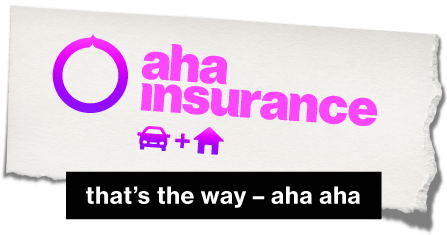Auto insurance in Ontario can sometimes be confusing with its legalese and arcane terminology. But the concepts themselves are relatively simple once someone has explained them to you. In this post, we will help you understand what is TPL and comprehensive insurance and how they work together as part of the Ontario auto insurance policies provided by insurance companies.
Frequently Asked Questions
What is third-party liability (TPL)?
TPL, which is an acronym for third-party liability coverage is an essential component of every Ontario car insurance policy. This covers damages to other people in an auto accident for which you were deemed to be responsible. Without this coverage, you might be out of pocket to pay for damages caused by you and could even face lawsuits brought by the injured parties. There are two types of coverage for injury or damage included in third-party liability.
Bodily Injury – This coverage applies when the driver of your vehicle is responsible for killing or injuring a pedestrian or someone in another vehicle. Third-party liability coverage will pay any personal injury lawsuits made against you, up to the liability limits of your policy. Common third-party liability claims include those for any medical expenses the injured person may incur as they recover, lost wages and the cost of paying for long-term additional expenses such as wheelchair ramps and home healthcare.
Property Damage – This component of the third-party liability coverage pays for the cost of repairing property damaged during an accident. Examples of common claims include the cost to replace trees, bushes and fences damaged in an accident or the cost to replace a bicycle involved in a collision. Third-party liability coverage never pays to repair or replace your own vehicle if you are responsible for the accident and you will have to pay the full deductible amount for any applicable coverages.
For both bodily injury and property damage claims, your third-party liability coverage will cover the cost of legal fees necessary to defend you in court.
What is comprehensive insurance?
Comprehensive insurance covers you for damage to your vehicle and property that occur when you are not driving the vehicle. The coverage steps in if your car is vandalised or stolen, paying to repair or replace the vehicle, up to the policy limits.
Comprehensive insurance will also respond if something classified as a “flying object” falls onto or flies into your vehicle, including downed trees or branches, ice falling from a roof or even badly thrown baseballs, bats or toys. if a moving animal such as a moose or deer hits your vehicle, the damage will also be covered by comprehensive insurance.
With the exception of a “flying object” hitting your vehicle, it is important to remember that comprehensive coverage will not pay for damages if you are driving it and the vehicle is involved in an accident. That type of claim is only covered if you purchase optional collision coverage.
What is the difference between TPL and comprehensive insurance?
The primary difference between liability insurance and comprehensive insurance is that third-party liability responds to claims made against you by someone else and pays any settlement to them, while comprehensive insurance steps in to pay you for damages to your own vehicle.
In addition, third-party liability coverage only steps in when you are responsible for the accident and the vehicle was in motion. Comprehensive coverage claims usually occur when the vehicle is not being driven (although this is not a hard and fast rule) and does not consider who was responsible for the damage.
Is comprehensive insurance more important than TPL?
It is difficult to say whether comprehensive insurance is more important than TPL because the coverages are so different.
What is clear, is that your financial exposure is significantly higher for third-party liability claims than those covered by comprehensive insurance. A TPL claim involving someone who experienced a serious long-term injury or disability because of a car accident could run into millions of dollars of damages and ongoing costs. Comprehensive claims are usually limited to the replacement cost of your vehicle. In this regard, TPL is clearly more important than comprehensive coverage.
However, car accidents that result in serious injury are relatively rare in Ontario and comprehensive claims are much more common. If you own a car valued at $40,000 and it is stolen or damaged in a natural disaster, the loss of the vehicle may be catastrophic to someone without the means to pay out of pocket for a replacement.
TPL is clearly important when protecting yourself against catastrophic losses that involve serious injury and death. However, depending on your financial circumstances, comprehensive insurance could be equally important for smaller but substantial financial losses resulting from damage to your car.
Is TPL mandatory for car owners?
Third-party liability coverage is indeed part of the mandatory insurance required by law. In Ontario, provincial law requires every vehicle to maintain specified insurance coverage, often referred to as mandatory insurance. In addition to third-party liability coverage this mandatory insurance policy includes these primary coverages:
Accident benefits coverage – This insurance coverage protects you and the occupants of your vehicle should any of you be injured or killed in an accident, regardless of who caused it. Accident benefits coverage will pay for any healthcare costs beyond what is covered by OHIP, including rehabilitation costs, physiotherapy, attendant therapy, and the cost of home maintenance if the injured person is not able to perform common tasks. There is also limited loss of income coverage that will respond if the injured person is unable to work.
Direct compensation – property damage coverage – This coverage will pay to repair or replace your vehicle and its contents if you are involved in an accident that was caused by someone else. Claims made under this section of your policy are paid by your insurer. Note that there are some conditions that apply to this coverage, and it only applies to multi-vehicle accidents that take place in the province of Ontario.
Uninsured automobile coverage – This important coverage responds if you or a family member were injured or killed by a hit and run driver or a driver who does not maintain insurance on their vehicle. It will also pay to repair or replace your vehicle if it is damaged by an identified uninsured driver (but does not cover hit-and-runs).
It should be pointed out that even a minimum amount of coverage for collision and comprehensive insurance is not part of the mandatory coverages required by law and must be purchased as optional policy endorsements.
When asking what is TPL and comprehensive insurance, it is important to understand that these are just two of many different types of mandatory and optional insurance that comprise an Ontario auto policy. We suggest you reach out to an insurance professional to discuss what auto and home insurance coverages are right for you and your unique circumstances.






